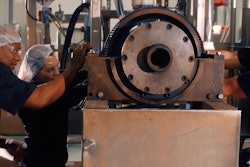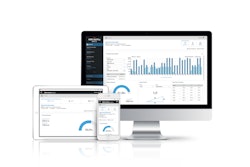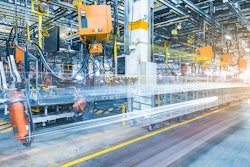The need for industrial facilities to reduce water consumption is becoming ever more pressing. In areas of the country like California and many surrounding states, it has been a concern for decades. Now, other parts of the country, many of which have traditionally had few worries when it comes to water consumption, are also being asked to cut back.
Facility managers should look at this as an opportunity. Very simply, it pays to reduce consumption. When you think about it, we are paying for water twice: once when it is delivered to our plants, warehouses and factories, and a second time, when it is discharged, sent to water treatment centers. What this tells us is that reducing water consumption helps reduce two production costs, simultaneously.
But cutting water consumption can reduce costs in other ways as well. Less water typically means less plumbing, fewer plumbing repairs, and the more efficient use of water in HVAC systems — which usually results in using less water — also can result in reduced heating and cooling costs.
And one more way reducing consumption pays involves the way local and state utility companies charge for water. Throughout most of the 20th century, water charges have been intentionally low, especially for industrial users. Many local governments even offered discounts as an enticement for new industrial players to locate in their states.
That’s all coming to an end. Consumers, as well as commercial and industrial water users, are now being asked to pay much more for water, not only to cover the actual costs of delivering and removing water from facilities, but to make sure the infrastructure is in place to handle current and future water demand.
The Payback In Real Dollars
If we take a look at facilities around the world, we see many that have reduced water consumption and enjoyed significant cost savings. For instance, in Fort Worth, TX, American Airlines designed a maintenance base that, among other things, recycled water and expanded a reverse-osmosis system, allowing the facility to treat more than 40 million gallons of wastewater annually. These steps helped the airline reduce water consumption by as much as 36 percent and reduce water charges by more than $1 million per year.
Another big Texas company, Frito-Lay, has managed to save one billion gallons of water annually as a result of conservation efforts started back in 1999. Their big push has been to recycle water used to make potato and corn snacks. In the process, they have cut consumption almost in half, resulting in substantial cost savings.
And across the pond in Europe, U.K. supermarket chain Sainsbury has saved more than $2.4 million annually just by fixing leaks, installing sensors on toilets and urinals and reducing the amount of water used in toilets.
Steps To Take
Okay, here’s where we get down to the nitty-gritty. And fortunately, there are many steps administrators of industrial-type locations can take to reduce water consumption, and it all starts by turning off the taps. Some industrial locations, based on the items they are assembling or use, have water being used continuously throughout the day. Is this necessary? Are employees accessing
this running water so much throughout the day that it needs to run continuously? In so many cases it does not.
Additional steps to take include the following:
- Monitor consumption: More than half a century ago, Dr. H. James Harrington, engineer, businessman and author, said, “Measurement is the first step that leads to control and eventually to improvement. If you can’t measure something, you can’t understand it. If you can’t understand it, you can’t control it. If you can’t control it, you can’t improve it.” This means the first step in water reduction, is determining how much water the facility is using on an annual basis as well as where it is being used. It’s often a good idea to go back three years to get a thorough appraisal of water consumption.
- Form a water reducing team: The job of the water reducing team is to investigate all the areas in the facility where water is being used, and then, look for ways of reducing these amounts.
- Low-hanging fruit: The team should start with the “low hanging fruit.” For instance, restrooms are big water users. If the fixture is more than five years old, consider replacing it. Also, consider selecting no-water or waterless urinals. These are used in many industrial locations throughout California, Arizona and New Mexico, mainly because they reduce water consumption so dramatically. (See Sidebar)
- Hoses and leaks: Something as simple as fitting a trigger-action valve to hoses and fixing leaks can reduce thousands of gallons of water annually.
- Cleaning: In some industrial locations, equipment and facility cleaning uses large amounts of water. Some tools and equipment can be manually cleaned or “dry cleaned” without using water. Even if water is still necessary, manually cleaning tools and equipment first, typically means less water is necessary.
- Implement water efficiency measures: So we are clear, water efficiency refers to long-term water reduction strategies. Industrial facilities use water differently. A food processing plant, for instance, uses vast amounts of water for cleaning food items along with the tools and equipment used in food production. However, to use water more efficiently, many have begun recycling this water; controlling the amount of water used for cleaning; and selecting equipment designed for quicker cleaning with less water.
There are several more steps we can discuss. And once water consumption has been reduced in the facility, make sure employees know about it. This “good news” has a habit of attracting more good news. People working in the facility start finding new ways to reduce water consumption, providing fuel and energy to that water-reducing journey we mentioned earlier.
Klaus Reichardt is founder and CEO of Waterless Co. Inc., based in Vista, CA.























